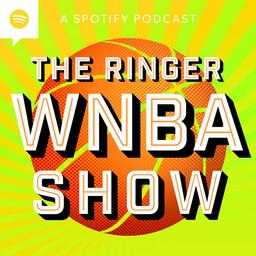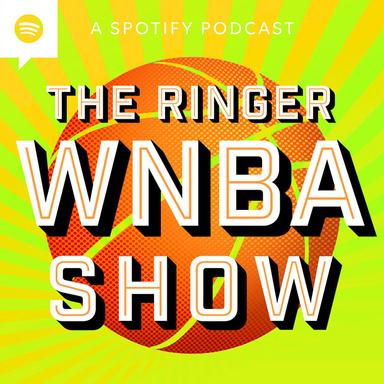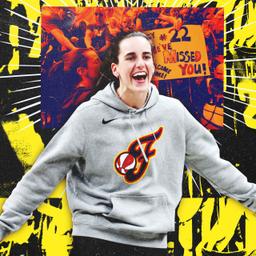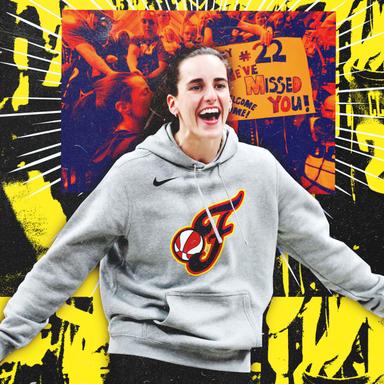Last season, the WNBA took its first steps into a larger world, eventually finding its balance with a ratings-busting Finals that became an instant classic. As the league—and her Indiana Fever—hurried to catch up to the windfall of the Caitlin Clark effect, the offseason featured considerable player movement, eight head coaching changes, five front-office shake-ups, a blockbuster trade, the formation of a superteam in Phoenix, and the dissolution of another in Seattle.
All of which is to say: The 2025 season is poised to be the greatest in the league’s history. Clark remains a worldwide sensation. The Paige Bueckers Show is underway in Dallas. Angel Reese, a reminder that you can be a hard-nosed grinder and an influencer, is hungry to make the playoffs for the first time. And after last year’s heartbreaking Finals loss, Napheesa Collier is ready to leave it all on the court and the negotiating table for the new collective bargaining agreement, with a league of her own in her back pocket.
It’s this kind of magnetism, personal investment, and chutzpah that makes the W, more than any other league, a reflection of its biggest personalities, who vary from buttoned up and cerebral to theatrical and fearless. In that spirit, our primer for the 2025 WNBA season is coming in the form of an alignment chart. For the uninitiated, here’s a quick guide:
Chaotic Good: A person who pursues good by following their intuition as opposed to societal norms, making them a natural rule breaker. (Think: Han Solo, Todd Chavez, Charles Barkley.)
Lawful Good: A rule-abiding, order-oriented person who knows, understands, and works within the confines of the system in pursuit of the greater good. Often self-sacrificial. (Tim Duncan, Ned Stark, Leia Organa.)
Chaotic Evil: Someone who pursues their self-interest above all else, their motives either disconnected from or actively detrimental to the best interests of everyone around them. These people can incidentally upend things for the better, but they aren’t concerned about the ripple effects of their decisions as much as the pursuit of their vision. (LeBron James, Daryl Morey, the Joker, Roman Roy, everyone who has ever uttered the phrase “effective altruism.”)
Lawful Evil: A mercenary of order. A stickler for upholding the status quo, often because they understand how to operate and benefit from the rules and traditions of the day. (Dwight Schrute, Darth Vader, Pete Campbell, Tywin Lannister.)
There are also those who fall in the middle of one spectrum—your Neutral Evils, Chaotic Neutrals, and so forth. True Neutrals, people who fall in the middle of both spectrums, are rare. This list includes only one.
To preview the 2025 WNBA season, we’re highlighting the 20 most interesting figures in the league and breaking them down into the categories above. We went with a graph as opposed to the traditional grid format to really illustrate the nuances that distinguish each character. Caitlin Clark and Courtney Williams, for example, are both chaotic goods—a quadrant that is predictably overrepresented in this league of vagabonds—but in different ways.
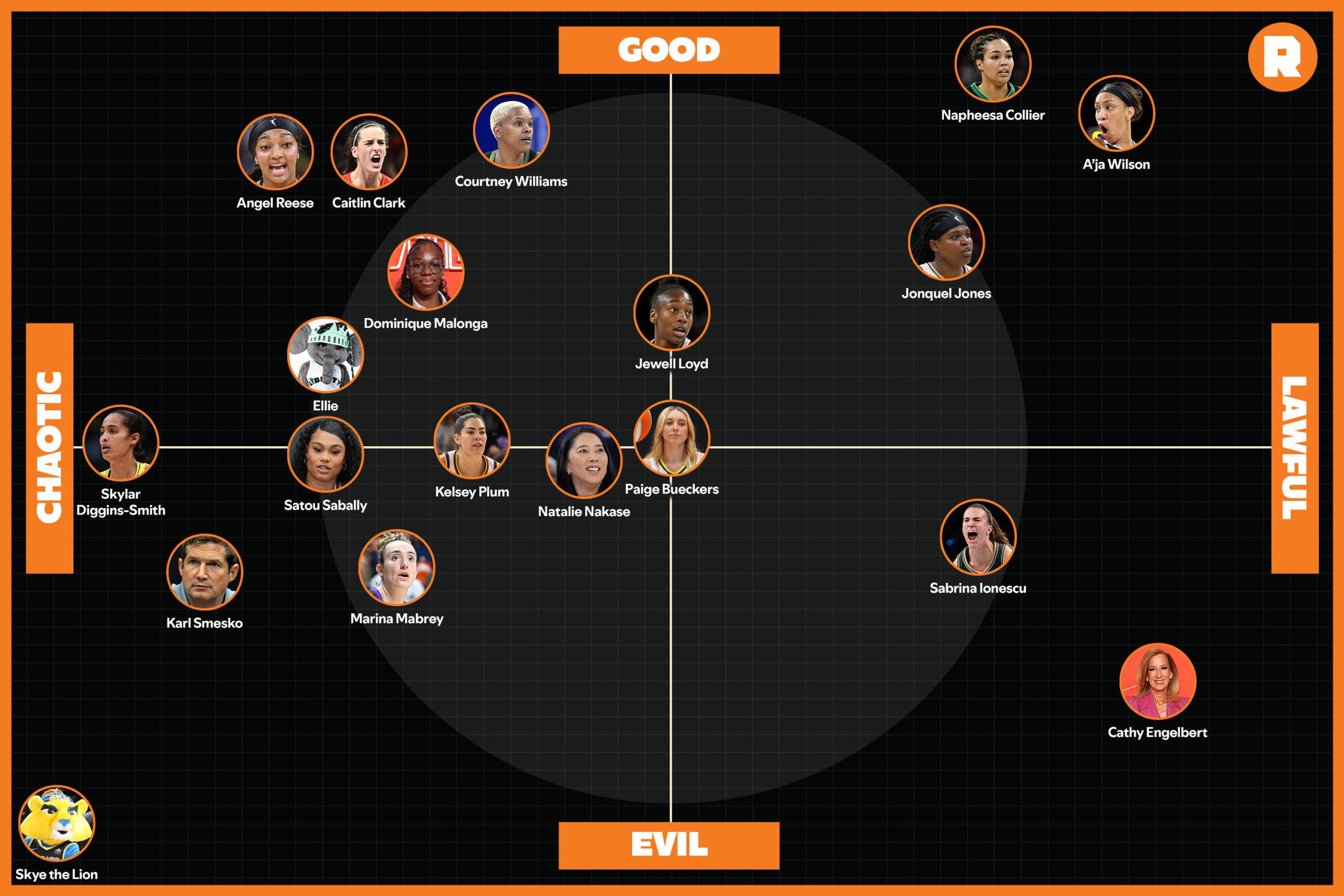
This list also serves as an extended—and somewhat altered—breakdown of this week’s episode of The Ringer WNBA Show, where we ran through the most interesting characters of the upcoming season.
Finally, and this is a somewhat vulnerable plea to a media machine that was bizarrely unhinged and decontextualized last year: Please don’t take any of this too seriously. What is evil and lawless, as defined by the x- and y-coordinates of this pixelated, two-dimensional graph, doesn’t always translate to evil or lawlessness in a meaningful way in the real world. Sometimes it might, but I’m not going to tell you whether it does and when. (Sucker!!!)
Without further ado, let’s get to our list of 20 characters, ranked on a sliding scale from good to evil.
Aliyah Boston, Indiana Fever: Lawful Good
The no. 1 draft pick turned no. 2 option, who did it so seamlessly and with such little fuss that we forgot to give her credit for sublimating her ego and handing the keys to the new engine of Indiana basketball.
She is Indiana’s steady, humming, reliable metronome, a sounding board in the locker room, the soft-spoken but assertive and quietly driven yin to Clark’s fiery, expressive yang. Her floater makes her one of the most consistent players in the 3- to 10-foot range, the oft-unappreciated area of the court where most of the offense in the W still starts and ends. Last year, opponents eventually learned to filter the Fever’s offense into that area, only for Boston to punish them with teardrop dagger after teardrop dagger. Ultimately, the gambit played into the Sun’s hands in the postseason, as a defense will always take a floater over a layup or a 3 from Clark, Kelsey Mitchell, or Lexie Hull. This year, with even more shooters surrounding her, as well as DeWanna Bonner and Natasha Howard roaming around, Boston’s overall touches and counting stats could go down, but she’s primed for a career year if she can leverage her short rolls into more assists for high-efficiency shots. Her ever-patient, fluid decision-making at the center of the court should make her a hub for Indiana’s high-powered offense and the bane of every defense in the WNBA.
Napheesa Collier, Minnesota Lynx: Lawful Good (Trending Toward Chaotic)
On the court, after years of steady development, Collier had an MVP-esque 2024 campaign, going from keeping the gears oiled to becoming a machine in and of herself.
In that spirit, she is certainly a lawful good—an unselfish ball mover who does whatever the possession demands, whether it’s screening, rolling, creating, or finishing. But she’s also turning into a kind of benevolent disruptor who can find and exploit the flaws in the system, on and off the court.
She knows the rules well enough to understand the loopholes in them, as she displayed in this feature by Sports Illustrated’s Emma Baccellieri, tying the foul that sealed Minnesota’s fate in Game 5 of the WNBA Finals to a structural problem in the league’s officiating, as opposed to the New York–favored conspiracy many saw it as.
As Baccellieri, a recent guest on The Ringer WNBA Show, said, Collier “really thinks about systems, which I think you have to be, to be the kind of person who looks at the landscape and thinks, ‘There’s room for a domestic winter league.’”
Collier’s new league, Unrivaled, has worked alongside the WNBA but has also been a competitive thorn in its side, stealing the W’s thunder during free agency and the draft when it was leaked that no. 1 pick Bueckers would make more in one nine-week season of Unrivaled play than she will in her four-year WNBA rookie contract. It’s a talking point that will surely work in the favor of the players union (which Collier is a vice president of) in CBA negotiations.
You can even tie this semidetached, big-picture perspective to the only mark against Collier: a presumed niceness, derived from her even-keeled on-court demeanor. But it’s more of a weapon than a competitive flaw, a fact that’s becoming clearer as she enters her prime.
A’ja Wilson, Las Vegas Aces: Lawful Good
Wilson is the most dominant player in women’s basketball, operating with fluid, forceful perfection in the areas great power forwards have historically dominated: the mid-post, the midrange, and the rim.
Even as the league—and A’ja, to a degree—has flirted more with the space beyond the arc, she is so accurate that her midrange jumpers generate about the same efficiency as an average 3-point shot.
It’s a shot she can and will get to over and over through the course of a game, until opponents are forced to double. Case in point: On the night that she broke the W’s single-season scoring record, she did it with a midrange jumper that was one of seven she made that game.
Now that the reinvigorated Aces have regained the scoring balance of their championship days with a bouncy Jewell Loyd, healthy Chelsea Gray, and aggressive Jackie Young, Wilson probably won’t need to break any records to lead Las Vegas to a top-four playoff spot this season. What she has done early this preseason, though, is rededicate herself on the defensive end, an aspect of her game that slipped slightly after she took on a historic scoring load while, by the way, committing just 1.3 turnovers per game. She has a chance this season to win her fourth MVP in six years. This is about as perfect (and law abiding) as a basketball player can get.
Courtney Williams, Minnesota Lynx: Chaotic Good
After years of being a journeywoman, this shooting guard turned point guard finally found her place on her fifth team, ingratiating herself with intrepid jumpers, winning smiles, and quick wit.
In the era of pace and space, Williams has said she wants to go down as the greatest midrange shooter of all time. She’s occasionally a little quick to the draw in the context of a Minnesota offense that thrives on ball movement and late-possession breakdowns of opposing defenses, but she was also the player who was willing to step up—right after a missed 3—and hit the biggest four-point play in WNBA history.
The Lynx, after losing in Game 5, are looking for revenge this season. “The chip is crazy right now; it’s burning my shoulder,” Williams said in training camp. The edict for Minnesota, which brought back its entire starting lineup, is for everyone to return a little bit better. For Williams, that means embracing the more holistic aspects of being a point guard: using her voice to lead. Cultures form around leaders, and an extra dose of Williams’s irrational confidence and joie de vivre could be exactly what pushes her teammates over the hump.
Caitlin Clark, Indiana Fever: Chaotic Good (Teetering Toward Lawfulness)
There’s a fine line between recklessness and courage, and Clark toes it with every needle-threading pass and logo 3. And rightfully so. As her new coach, Stephanie White, put it during the preseason after Clark reenacted her record-breaking logo 3 in her return to the University of Iowa, adding an extra foot for good measure, “Nobody tells Steph Curry not to take good shots, right?"
After training all offseason, Clark is entering her second pro season with a stronger frame and a more diversified scoring package, both of which should help put a dent in the 5.6 turnovers she averaged last season, which led the WNBA by far. In the preseason, we’ve already seen her pull out an in-and-out dribble, more left-handed drives with hesis, a more polished banker, and a floater she worked on all offseason.
Oh, and the player who loves that stepback to the left is fading to her right now, too:
Indiana’s high-octane offense—which could potentially break WNBA records this season—relies on her combination of verve, courage, and accuracy, which has captivated the sports world at large. The Fever’s title hopes likely rest on how true they can stay to their style while mitigating mistakes. The addition of veteran stars Bonner and Howard, who have five championships between them, should help. Clark also vowed to White, after picking up six technical fouls last year, that she wouldn’t have more than two this year.
Turnovers and techs are probably somewhat inextricable from Clark’s game. But if the Fever want to go deep in the playoffs, where the margins get thinner and mistakes become more damning, mitigating both will be important. Let’s not forget the memes that haunted Curry in 2016.
Angel Reese, Chicago Sky: Chaotic Good
Reese is a chaos agent on and off the floor, and while she looks out of control at times, she often knows exactly what she’s doing.
When she says her salary doesn’t pay her rent, she’s exchanging PR-friendly relatability for leverage ahead of the first CBA negotiations that will feature the first stars who grew up in the NIL generation: financially experienced, with deeper pockets and multiple income streams. Same goes for when she said she heard that players might sit out the season if they don’t get what they want. She knows what she’s doing.
But after a summer of sound bites, Reese is entering the season with a businesslike demeanor—something she was perhaps signaling with her outfit choice, a gray suit and tie with a skirt, in her preseason return to LSU. She’s shirked questions attempting to bait her into talking about Clark, and she’s repeatedly said she’s hungry to make the playoffs after a rookie season marked by more losing than she’s ever endured in her career.
And she’s backed it up on the court so far, embracing a role that’s taken the W’s all-time leader in consecutive double-doubles away from the paint to create more space for her rival turned teammate Kamilla Cardoso to operate in the post. She’s also using the newfound space to take opponents off the dribble and get to the rim, where she is still struggling to finish layups, an aspect of her game she’ll need to polish to maximize her scoring ability. But this new role mitigates that weakness while accentuating her strengths, unlocking the former point guard’s dormant playmaking abilities.
Reese is now leveraging her elite rebounding ability into running the break off opponents’ misses, often lobbing rainbow passes up the floor, tapping into the dormant passing ability the former point guard hasn’t honed since moving off the perimeter upon transferring to LSU in her junior year. Her vision has allowed Chicago’s guards to punish overzealous defenders with backdoor cuts, and she spent the fourth quarter of Chicago’s final preseason game against Minnesota playing the point forward, setting up Cardoso when the rest of her teammates seemingly forgot about the 6-foot-7 dynamo in the middle.
She’s giving shades of Alyssa Thomas (who shot 42.8 percent from 2 in her first two years and improved her efficiency through her career) and Draymond Green, two fiery, high-IQ players who dominate games with their soft skills, like switching onto all five positions and making subtle plays for others.
Dominique Malonga, Seattle Storm: Chaotic Good
If you’re looking for a defensive answer to the 3-point revolution, look no further than the no. 2 pick in this year’s draft, a 6-foot-6 French phenom with the fluidity of a guard and the smile of an angel. Beyond being the only player in the league who could presumably block a Brittney Griner 3-point attempt or stay level with Clark and Sabrina Ionescu on their 30-foot stepbacks, Malonga possesses the kind of game-changing length and lateral quickness that could rearrange the geometry of the court. Half the league is waiting to see who becomes her first poster victim. Combine her size with frontcourt partner and perennial Defensive Player of the Year candidate Ezi Magbegor, and Seattle’s defense will be like a laser-based security system in a Swiss bank. Whether opponents are going for a layup or a 3 off a screen, Storm defenders will be closer than they appear in the rearview.
Jonquel Jones, New York Liberty: Lawful Good
We call Satou Sabally a unicorn, and we’re salivating over how Malonga could reshape the geometry of the court, but Jonquel Jones has been the platonic ideal of the modernization of the big position for almost a decade.
She can handle the ball and shoot from anywhere on the floor. Last year, the former MVP, playing alongside two stars in New York, had one of her most efficient seasons, shooting 38.8 percent from 3 and a career-high 76.8 percent from the rim. She’s also accurate in between, with her patented floater serving as the ultimate release valve for an offense that occasionally loses track of her.
Not only does she allow the Liberty to play five-out, but her playmaking also helps her find cutters slicing through all that open space. She’s the perfect modern basketball player, somehow still flying under the radar despite winning the Finals MVP. Absolutely no notes.
Jewell Loyd, Las Vegas Aces: Neutral Good
Loyd had a tough campaign last season. Skylar Diggins and Nneka Ogwumike joined the Storm in hopes of forming the WNBA’s next great superteam. But the spacing was jammed, the coaching staff was investigated for bullying, and Loyd—nicknamed the Gold Mamba—shot a career-low 36 percent from the field. She struggled against the Aces in the playoffs, averaging 7.5 points in two games (by far a career low) and finishing the series—and her Storm career—on the bench.
Loyd was a shell of herself by the time the season ended, but she’s looked reenergized in her preseason minutes with the Aces, staying in front of opponents on the defensive end and cutting to the rim to take advantage of the gravity Wilson’s presence creates. She is the clear no. 2 scoring option behind Wilson, in a configuration that mirrors her title runs with the Storm, when Breanna Stewart was playing MVP-esque basketball and Sue Bird (the Chelsea Gray in this metaphor) was running point.
Ellie the Elephant, New York Liberty: Chaotic Good (Toeing the Line of Evil)
I know. Trust me. I know. Everyone loves Ellie. We love that she’s clearly played by multiple Bushwick twinks, because how could a sole person maintain the energy to be that consistently saucy? She’s an incredible feat of marketing, but what if that’s the problem? Ellie might be too powerful, too enchanting, so much so that I know multiple people who could tell you who she is but couldn’t name the 2024 Finals MVP. I’m not a proponent of telling anyone to dull their shine for the sake of anyone else, so I’m kind of in conflict with myself as I type this. But I fear that this mascot, in an inherently ancillary role, keeps stealing the show she’s meant to augment.
Paige Bueckers, Dallas Wings: True Neutral
If you could concentrate all the edicts of UConn basketball into one player, you’d come out with someone close to Bueckers: selfless, deflecting attention and shots to her teammates, a quick decision-maker, defensive-minded, versatile, efficient, and averse to turning the ball over. In her final year at UConn, as Geno Auriemma slowly pulled the dagger-throwing killer out of her, Bueckers found an equilibrium that I expect her to carry to Dallas.
Bueckers is, at her core, a relationship builder. Even though she was the no. 1 pick, she’ll likely be the one ingratiating herself with her teammates, learning where they like the ball in the offense, and then figuring out her own place from there.
“I wanna use my voice, build confidence within the players I’m playing with, challenge them, support them,” says Bueckers. “Really, I want to be a leader, even though it is my rookie season, and continue to use my voice and find the best ways to use it while not overstepping.”
And why not? Her backcourt mate Arike Ogunbowale has the deepest isolation bag in basketball. Bueckers’s passes have her smiling like she’s in South Bend.
Judging by the way things have looked in the preseason, the greatest service Bueckers could provide to the Wings offense is her gift of organization: finding DiJonai Carrington on cuts, setting up NaLyssa Smith in the post.
Off the court, she’s always been a scoundrel—annoying and childish, as she would put it—and that hasn’t gone anywhere. Carrington has seemingly replaced Auriemma as Bueckers’s prime antagonist. Bueckers thought about getting a dog when she got to Dallas, only to backtrack after having a “mature conversation” with herself about how much she’d be on the road. “I don’t want my dog to grow up in an unstable home.” I, for one, am looking forward to grown-up Bueckers, who is already learning one of the secrets of adulthood: The more stable you are, the more freedom you have to be chaotic.
Kelsey Plum, Los Angeles Sparks: Chaotic Neutral
Plum is an absolute gamer. She’ll trash-talk anyone, from your average fan to Spike Lee to the originator of the form herself, Diana Taurasi. After a slow start to her career, a devastating injury, and being thrust into a sixth woman role, she's built herself into a star. And now she's betting on herself again, leaving the plush trappings of Las Vegas to build something new in Los Angeles as the go-to option. Along the way, she started the Dawg Camp, designed to help smaller guards like her integrate into the pros so that they won’t struggle like she did. But if Plum is successful in Tinseltown, she could make the Sparks a major free agent destination again, making them the WNBA’s answer to Lakers exceptionalism. And that’s undeniably evil. Balance those factors out, and you’ve got a chaotic neutral star.
Skylar Diggins, Seattle Storm: Chaotic Neutral
A wiry, 5-foot-9 bundle of incandescent passion, Diggins is incredibly difficult to pin down. She has no issue with calling out unacceptable treatment from previous employers or unacceptable play from (often) previous teammates. The former has made her a key voice in the players’ fight for equal treatment and better maternity benefits. When it comes to the latter, her motives are in the right place and her effort on the court is unwavering, often making her a fan favorite. But her delivery has left her at odds with multiple teammates, including Taurasi and Loyd.
Satou Sabally, Phoenix Mercury: Chaotic Evil
Sabally spurned two contenders seeking her services this summer, one of which her sister just won a championship with, which is definitely chaotic and somehow both good and evil. Nicknamed “Unicorn” because she’s got the range and playmaking of a guard in a 6-foot-4 frame, she’ll be a great fit in Nate Tibbetts’s positionless system. Ask her to create on her own, and she’ll often fire off rushed jump shot attempts, but in the context of a team-focused offense, she’s the ultimate connector.
The problem (maybe) is that Phoenix, which formed a superteam this summer, already has former Sun big Alyssa Thomas, another elite gear-oiling playmaker who can push the break off rebounds but struggles to create in isolation. Is it possible that two of the most complementary pieces in the WNBA might not complement each other? Too many chefs, not enough line cooks? Or do we just need to give this experiment time, reps, and a trade deadline acquisition to bolster its shooting and depth?
Sabally will also fire off the boldest passes you’ve ever seen, a culprit for her preseason turnovers, but she’ll occasionally churn out gold like this:
She’s the ultimate wild card on this list. Six months from now, the Mercury could end up being a top-four seed. They could also miss the playoffs entirely.
Natalie Nakase, Golden State Valkyries Coach: Chaotic Evil (but Just Barely)
Every team, but especially one in its inaugural season, is a reflection of its leadership, and the 5-foot-2—5-foot-1 3/4, if you ask her—Nakase, a UCLA walk-on who willed herself into an WNBA tryout once upon a time, has built a team in her own image: ultracompetitive underdogs who live and die with every loss, who use heart, IQ, and work ethic to overcome any perceived physical disadvantages.
“Low-key, I'm obsessive. I am obsessive about basketball,” Nakase told The Ringer WNBA Show this offseason. “I'm an obsessive worker, and so I think when you just put those two together, I'm kind of an end result. Whenever I set a goal, I know how to focus in on it. I don't get distracted. I don't care about a lot of things other than my goal. That's what I do to be in the position that I am. But anybody can do this.”
The Valkyries brain trust—which also includes former Liberty assistant general manager Ohemaa Nyanin and international scouting whizz Vanja Černivec—will do things their way, taking full advantage of the blank canvas of building an expansion team.
“It was a time for all three of us to be super creative and intentional,” Nakase said. “We could study other expansion teams, but why not take what I learned from the Aces, take what Ohemaa learned from the Liberty, take what Vanya learned from the London Lions? We all were part of a championship culture, so why not put that all together and create our own roster of what we feel is going to win and not try to go back in history and copy everyone else's stories? Why not write our own story?”
Nakase could have swung more lawful or more evil, but she balances toughness with love. As someone whose career ended because of an injury, she doesn’t play around with players being hurt. Having fun has been a huge emphasis in training camp.
Sabrina Ionescu, New York Liberty: Lawful Evil
There’s something inherently evil, even greedy, about a title defense. Just after it wins its first title, a team is the most likeable it will ever be. Then the perception of it begins to shift. Fans and other teams resent the defending champs for going for the title again; it takes only two championships to make a villain. On top of that (and look, she seems like a nice person), there is something genuinely menacing about the way Ionescu looks when she’s locked in.
I’m not too big to admit it: I’m a little scared of her. Which is probably a great thing if you’re a Liberty fan:
It’s also terrifying (and lawful) that her greatest season came after she added more skills to bolster the logo bombs and flashy passes that put her on the map at Oregon. She improved defensively, developed an inside game, and worked on her floater, to the point that it didn’t even matter that she shot just 33 percent from beyond the arc on the year. I don’t expect that regression to hold. When it comes to Ionescu, I’m buying the dip.
Marina Mabrey, Connecticut Sun: Chaotic Evil
You could forget her beef with Napheesa Collier (or not), which goes all the way back to their college days, when they played for archrivals Notre Dame (Mabrey) and UConn (Collier):
Or you could even ignore the fact that she credits her fiery personality to growing up in New Joyzey.
But we really have to draw the line at two trade requests in one season. Is Mabrey the Jimmy Butler of the WNBA? In fairness, Butler was vindicated (for a time), and Mabrey might be, too.
Chicago honored her midseason trade request to the Sun, whose offense she juiced en route to a semifinals run. But the Sun lost their entire starting lineup last summer and entered a rebuild. Her motivations—winning a title—are sound. It just so happens that the two teams she got traded to shifted their priorities to rebuilding a year after her arrival. Still, she had to know that would be a risk with the Sun, whose core was made up of free agents last summer. Yet another Mabrey trade could boost the playoff chances of the Phoenix Mercury or Seattle Storm, both of whom could benefit from her shooting and chutzpah. Just a warning for the Storm, though: The guards from Guard University don’t always get along.
Karl Smesko, Atlanta Dream Coach: Chaotic Evil
In the first possession of Smesko’s WNBA coaching career, Griner, who has more career dunks (27) than 3-pointers made (16), nailed a triple with 15 seconds left on the shot clock. A few possessions later, Bri Jones—who, in seven years, has taken 98 percent of her shots at the rim—let it fly from 3, too.
During the offseason, I had a hard time conceptualizing the new-look Atlanta Dream, who hired Smesko—the analytics whiz whose last Florida Gulf Coast University team once led the nation in 3s attempted—and then followed that up by signing Griner and Jones, free agency’s two most dominant post threats.
It turns out that Smesko is enough of a sicko to try his form of bizzarro Mazzulla-ball with just about anyone. In a sense, it’s admirable. Coaches often make passing remarks about not putting players in a box, only to get trapped by the comforting allure of predetermined roles.
Not Smesko, whose methods transcend his personnel while giving them a chance to evolve. Griner, whose career longevity will depend on growing her range, already started to embrace the shift before Smesko arrived, hitting a career-high nine 3s last season and closing out her Unrivaled campaign with four 3s in her last five games.
The big-picture question for the league: What will the growing influence of analytics mean for the game? Is this the future we’ve all been waiting for or the kind of gimmick that will flatten out the style diversification that has drawn fans in?
Cathy Engelbert, WNBA Commissioner: Lawful Evil
Engelbert was met with boos from the crowd at this year’s draft. In fairness to her, a well-liked commissioner is probably a bad one. And in fairness to the crowd, the league’s infrastructure lagged behind its explosion in growth and popularity last year.
This isn’t entirely her fault. The league, under her tenure, has reinvested in itself after a capital drive that allowed it to put more money toward engagement, social media, and more. As she told Bill Simmons this week, the league had one marketing employee when she joined in 2019. It now employs 30. Still more will be needed to capitalize on this moment. The quality of the refereeing is also in need of an overhaul, starting with an independent play review system like the NBA’s.
Which also means that when CBA negotiations heat up and she reminds fans (and players) that the league still needs to keep some money in its coffers to grow, she won’t be entirely wrong. At the same time, as much as she has invested in growing the league, she is employed by the owners, who will be incentivized to maximize their earnings from the W’s explosion in popularity.
Skye the Lioness, Chicago Sky: Chaotic Evil
As Shakeia Taylor put it, Sky is “an extremely obvious attempt to copy the aura of” Ellie. She’s probably powered by the same AI that makes videos of anthropomorphic cats. She features some abrasive, borderline sickening color blocking. Lions, as far as I know, don’t have blue noses.


